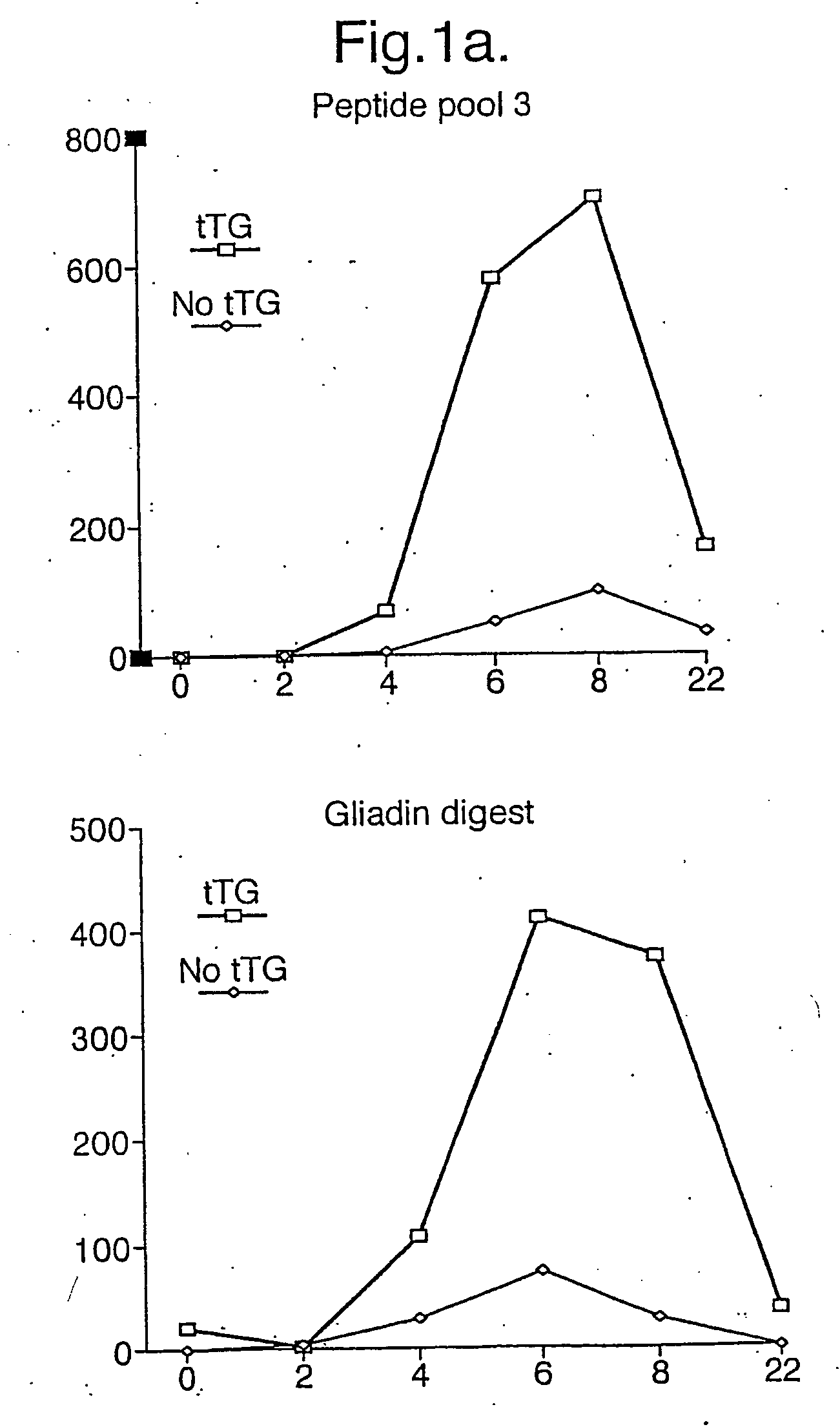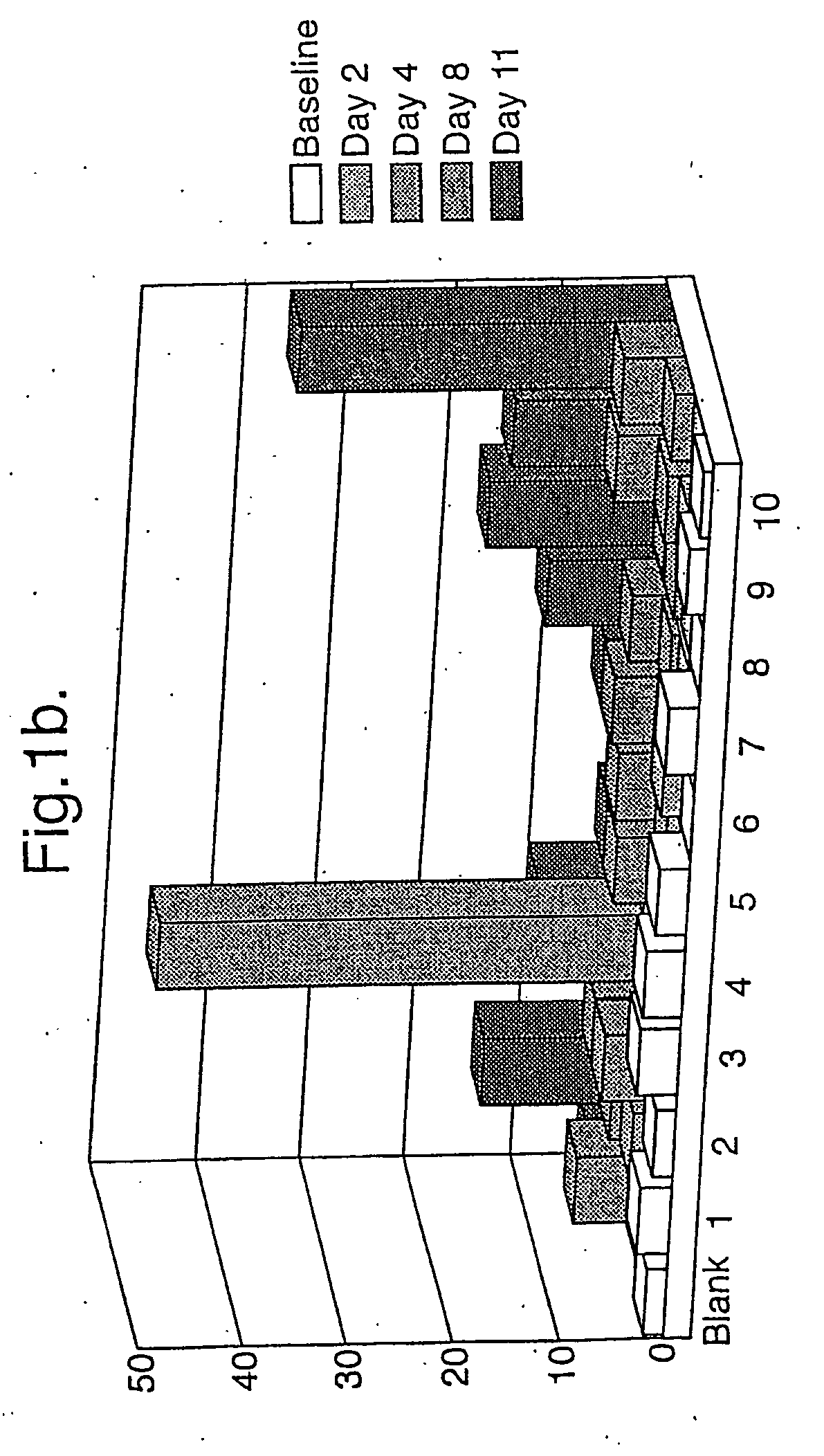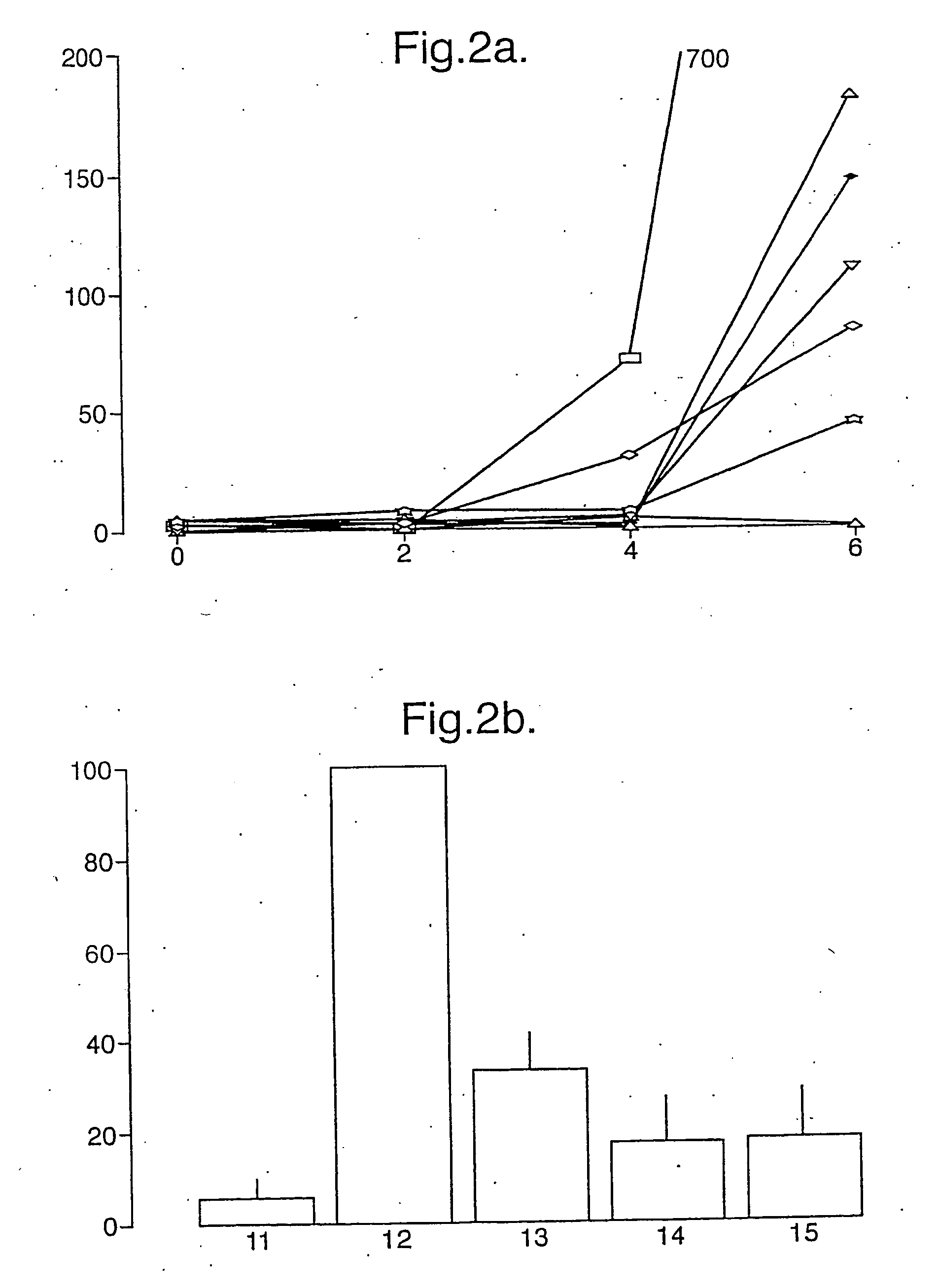Therapeutic epitopes and uses thereof
a technology of epitopes and epitopes, which is applied in the direction of peptide sources, immunological disorders, metabolism disorders, etc., can solve the problem that the patient is inconvenienced in taking such a biopsy
- Summary
- Abstract
- Description
- Claims
- Application Information
AI Technical Summary
Benefits of technology
Problems solved by technology
Method used
Image
Examples
example 1
[0212] We carried out epitope mapping in Coeliac disease by using a set of 51 synthetic 15-mer peptides that span the complete sequence of a fully characterized a-gliadin, “A-gliadin” (see Table 1). A-Gliadin peptides were also individually treated with tTG to generate products that might mimic those produced in vivo3. We also sought to study Coeliac disease patients at the point of initiation of disease relapse to avoid the possibility that epitope “spreading” or “exhaustion” may have occurred, as described in experimental infectious and autoimmune diseases.
Clinical and A-Gliadin Specific T-Cell Responses with 3 and 10 Day Bread Challenge
[0213] In a pilot study, two subjects with Coeliac disease in remission, defined by absence of serum anti-endomysial antibody (EMA), on a gluten free diet were fed four slices of standard gluten-containing white bread daily in addition to their usual gluten free diet. Subject 1 ceased bread because of abdominal pain, mouth ulcers and mild diarrh...
example 2
The Effect on T Cell Recognition of Substitutions in the Immunodominant Epitope
[0224] The effect of substituting the glutamate at position 65 in the 57-73 A-gliadin epitope was determined by measuring peripheral blood responses-against the substituted epitopes in an IFNγ ELISPOT assay using synthetic peptides (at 50 μg / ml). The responses were measured in 3 Coeliac disease subjects 6 days after commencing gluten challenge (4 slices bread daily for 3 days). Results are shown in table 3 and FIG. 8. As can be seen substitution of the glutamate to histidine, tyrosine, tryptophan, lysine, proline or arginine stimulated a response whose magnitude was less than 10% of the magnitude of the response to the immunodominant epitope. Thus mutation of A-gliadin at this position could be used to produce a mutant gliadin with reduce or absent immunoreactivity.
example 3
Testing the Immunoreactivity of Equivalent Peptides from Other Naturally Occurring Gliadins
[0225] The immunoreactivity of equivalent peptides form other naturally occurring wheat gliadins was assessed using synthetic peptides corresponding to the naturally occurring sequences which were then treated with transglutaminase. These peptides were tested in an ELISPOT in the same manner and with PBMCs from the same subjects as described in Example 2. At least five of the peptides show immunoreactivity comparable to the A-gliadin 57-73 E65 peptide (after transglutaminase treatment) indicating that other gliadin proteins in wheat are also likely to induce this Coeliac disease-specific immune response (Table 4 and FIG. 9).
Methods
[0226] Subjects: Patients used in the study attended a Coeliac Clinic in Oxford, United Kingdom. Coeliac disease was diagnosed on the basis of typical small intestinal histology, and normalization of symptoms and small intestinal histology with gluten free diet....
PUM
| Property | Measurement | Unit |
|---|---|---|
| Temperature | aaaaa | aaaaa |
| Fraction | aaaaa | aaaaa |
| Fraction | aaaaa | aaaaa |
Abstract
Description
Claims
Application Information
 Login to View More
Login to View More - R&D
- Intellectual Property
- Life Sciences
- Materials
- Tech Scout
- Unparalleled Data Quality
- Higher Quality Content
- 60% Fewer Hallucinations
Browse by: Latest US Patents, China's latest patents, Technical Efficacy Thesaurus, Application Domain, Technology Topic, Popular Technical Reports.
© 2025 PatSnap. All rights reserved.Legal|Privacy policy|Modern Slavery Act Transparency Statement|Sitemap|About US| Contact US: help@patsnap.com



